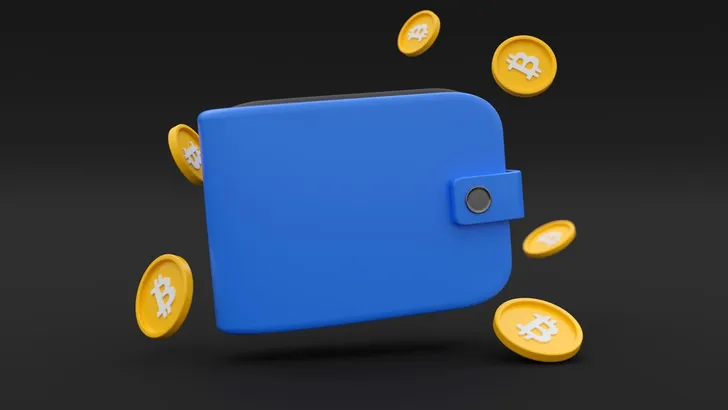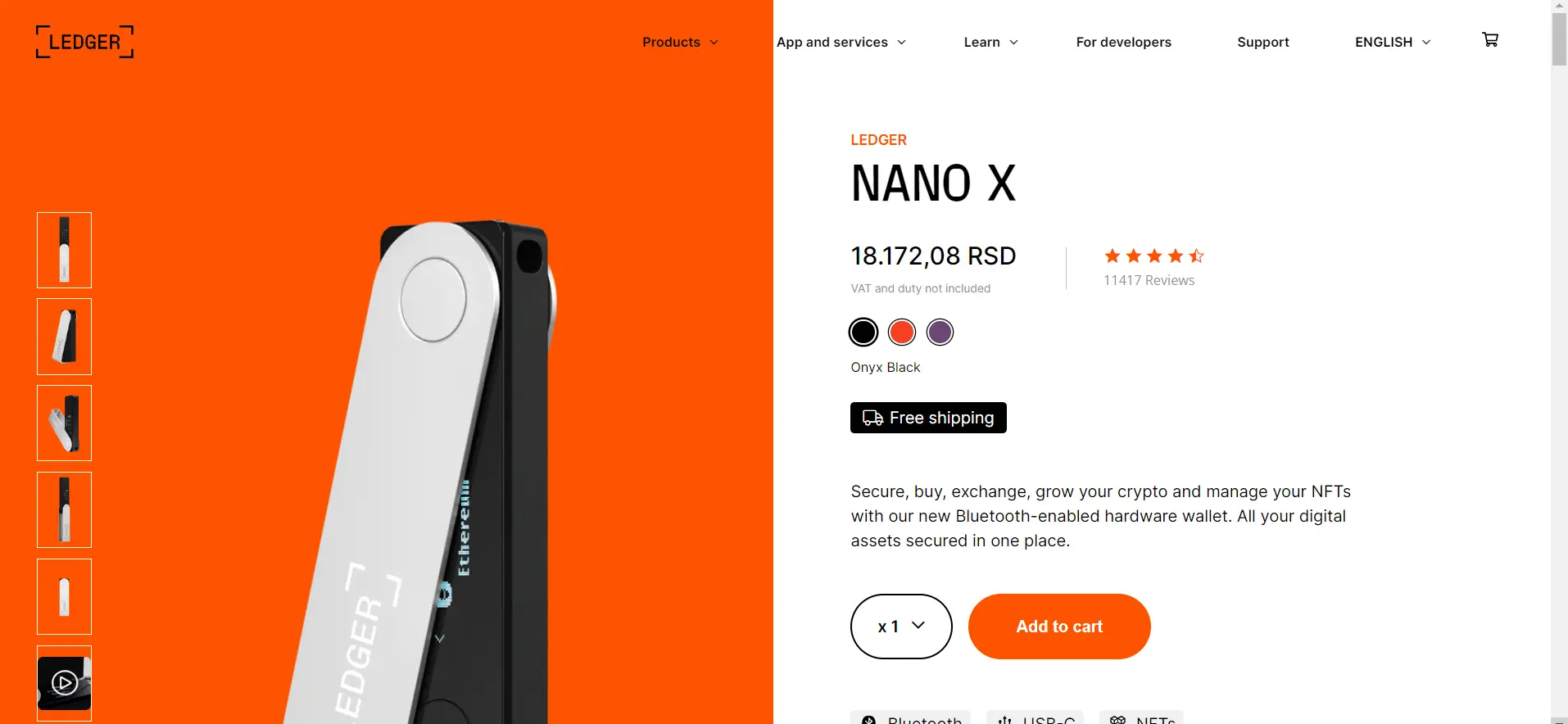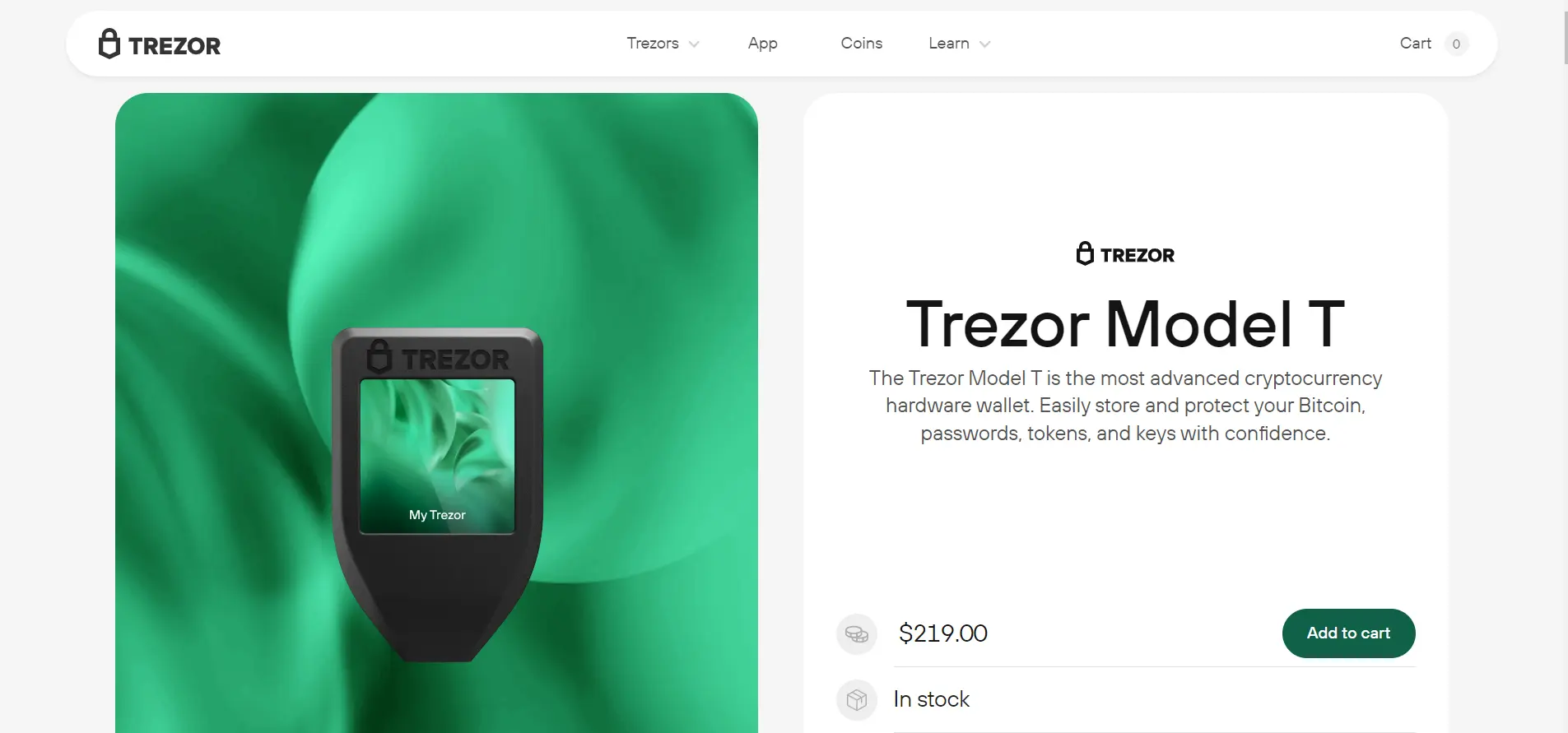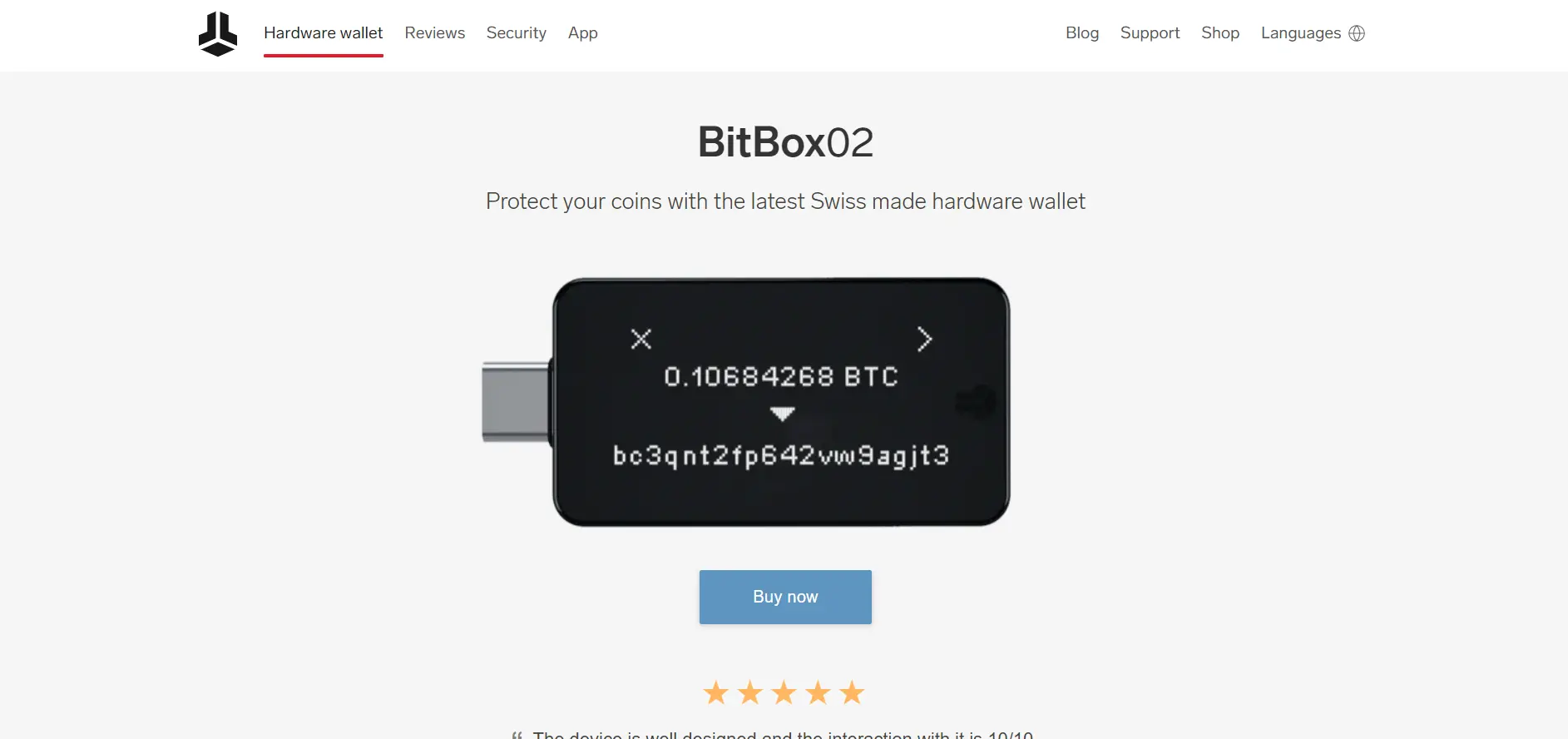What are Cold Wallets & Which Ones to Use in 2023

crypto wallets
Cryptocurrencies have become increasingly popular over the years, and as such, many investors have searched for ways to secure their digital assets. A cold wallet is one of the most secure ways to store crypto.
If you don’t know what cold wallets are, don’t worry—you’ve come to the right place!
In this article, we will discuss what cold wallets are, how they work, and which ones to use in 2023. So, read on!
What is a Cold Wallet?
Cold wallets are physical devices that allow you to store your cryptocurrencies offline. They are not connected to the internet, meaning they don’t need to be plugged into anything for you to access their contents. Essentially, they’re just like any other wallet you’d carry around with you.
Not being internet-connected makes it extremely difficult for hackers to steal your cryptocurrencies. So when you use a cold wallet, you have complete control over your crypto, and there’s no need for a third-party service to store your digital assets.
Cold wallets come in various forms, including hardware wallets, paper wallets, and even brain wallets. Hardware wallets such as Ledger and Trezor are the most popular. They are small devices that you can connect to a computer or smartphone to access the stored cryptocurrencies.
How Does Cold Storage Work?
Cold wallet storage is one of three crypto storage methods: hot (online), warm (offline), and cold.
While hot wallets are connected directly to the internet at all times, warm wallets connect via an interface like an exchange platform or mobile app.
This means if someone were to hack into your computer and steal your private keys, they would still be unable to access the wallet—there’s no way for them to connect with the blockchain through an online connection.
Most people use a hot wallet to store their crypto—it’s software that lives on your computer or mobile device, allowing you to send and receive crypto directly from the internet.
However, there are always risks associated with storing your money in this way because it’s vulnerable to hacking and fraud. Around $1 billion was stolen from hot wallets in the first half of 2018 alone!
That’s why many experts recommend using cold storage instead—physical storage devices that keep your coins offline so they’re out of reach of hackers or identity thieves.
How Safe is Cold Storage
Cold wallets are a safer, more secure way to store your cryptocurrency. They’re also harder to hack than hot wallets, making them ideal for anyone looking to protect their investments from fraud and theft.
While it’s true that cold wallets can be more inconvenient than hot wallets (they require you to manually input your private key every time), this is often mitigated by the fact they can be used on any device, including smartphones, while still offering protection against hackers and other cyber threats.
Cold Wallets Advantages
There are several advantages to using cold wallets to store your cryptocurrencies, such as:
- Security. Cold wallets provide the highest level of security for your cryptocurrencies since they are not connected to the internet. This means there’s no risk of hacking or theft.
- Control. Using a cold wallet, you have complete control over your cryptocurrencies. There is no need to trust a third-party service to store your digital assets.
- Accessibility. Cold wallets are accessible to anyone, regardless of their technical knowledge. They are easy to use and provide a simple interface for managing your cryptocurrencies.
Cold Wallets Disadvantages
While cold wallets provide a high level of security, there are some disadvantages to using them, such as:
- Cost. Cold wallets can be expensive, especially if you want one with advanced security features. However, the cost is worth it if you are looking to secure many cryptocurrencies.
- Accessibility. While cold wallets are accessible to anyone, they can be inconvenient if you need to make frequent transactions. Since they aren’t connected to the internet, you’ll have to physically connect them to a device to access your cryptocurrencies.
Cold Wallet vs. Hot Wallet
Cold wallets are not connected to the internet and, therefore, can’t be hacked. Hot wallets, on the other hand, are connected to the internet and therefore are prone to theft.
If you want your cryptocurrency funds to be secure from hackers and scammers, then you need a cold wallet. However, since these devices don’t have direct access to an online server or network connection (i.e., they don’t have any ports), they’re also more expensive than hot wallets.
Cold wallets require more hardware components like memory chips and processors to work properly without being compromised by malware or viruses, which could infect your computer’s operating system if left unprotected for an extended period.
Types of Cold Wallets
Cold wallets are typically physical devices where you can store your private keys in an air-gapped environment (i.e., one that isn’t connected to any networks). Keep in mind that cold wallets require you to take more responsibility for your security.
Here are some cold wallet examples:
#1. Paper Wallets
Paper walletsare a form of cold storage. They’re not connected to the internet, so they’re safe from hackers. A paper wallet is a physical version of your bitcoin address (for example) and a private key—you can print out your paper wallet and store it in a secure location, such as a vault or a safe.
#2. Sound Wallets
Sound wallets are perhaps the most unique type of cold wallet. They’re based on the idea that sound waves are a secure way to store data and use a series of tones to store private keys. This means that if you have access to your sound wallet’s passphrase, anyone who listens to it can access your funds, but nobody else will know what those funds are or where they’re stored.
Sound wallets can also be used as a cold wallet (i.e., one that never connects to the internet) or as a way for users who want more privacy than other types of cold storage provide but don’t want to go through all the hassle of using paper wallets or hardware devices.
Here are some of the popular sound wallets:
- Ledger. Ledger is a French company founded in 2014 that makes hardware wallets for cryptocurrency. The Ledger Nano S is the most popular model and supports Bitcoin, Ethereum, Litecoin, Ripple, Bitcoin Gold, and ERC20 tokens.
- Keepkey. The Keepkey is a hardware wallet, which means it is a physical device that stores your crypto funds. It’s also a cold wallet, meaning it doesn't connect to the internet and, therefore, cannot be hacked by cybercriminals. The Keepkey has an LCD screen so you can see what’s going on with your coins without connecting anything else up or using an app.
#3. Hardware Wallets
Hardware wallets are the most secure cold wallets because they store your private key offline. The most common type of hardware wallet is a USB stick with a small screen and buttons.
You can purchase these devices from many companies, and they come with different features. Some have touchscreens (like the SecuX W10), while others only have buttons and require you to interact with them through software running on your computer or phone).
A hardware wallet looks like a USB stick but has its own processor, memory, and storage space. It connects directly to your computer via a USB cable and stores private keys securely inside itself so that no one else has access (including hackers). We will mention Trezor as the main example of a hardware wallet.
Trezor supports Bitcoin, Ethereum, Litecoin, Dash, Zcash, and many other altcoins. It’s a USB device that stores your private keys. Trezor is more secure than most software wallets because it doesn’t have an Internet connection or any third-party servers involved in the signing process of transactions. This means there are no servers at risk of being hacked.
This also makes it less convenient becauseyou need to connect Trezor via USB every time you want to send coins from it or receive funds into it; however, this can be avoided by using an exchange like Coinbase as an intermediary between your main wallet and Trezor.
#4. Offline Software Wallets
Offline software wallets are a good option for users who require a high level of security. You need to be willing to put in the effort to set up and use the wallet properly. Electrum and Armory are two popular offline software wallets that offer advanced security features and are worth considering.
Keep in mind that offline software wallets are not as convenient as other wallets and require you to take additional steps to ensure the security of your cryptocurrencies.
Top 5 Cold Wallets to Use in 2023
Here are the top 5 cold wallets to use in 2023:
#1. Ledger Nano X

Ledger Nano X is a hardware wallet that offers advanced security features such as Bluetooth connectivity, a large screen, and support for over 1,500 cryptocurrencies. It’s user-friendly and easy to set up, making it a great option for beginners and advanced users.
#2. Trezor Model T

Trezor Model T is another hardware wallet that offers advanced security features such as a touch screen, multi-currency support, and passphrase protection. It’s also very user-friendly and easy to set up.
#3. Keepkey

Keepkey is a hardware wallet with a large screen display, making it easy to navigate through the wallet’s interface. It also offers advanced security features, such as passphrase protection and PIN protection.
#4. Cobo Vault

Cobo Vault is another hardware wallet that offers military-grade encryption and has a tamper-proof self-destruct mechanism. If somebody tries to attack your wallet, it will self-destruct, ensuring that your cryptocurrencies remain safe.
#5. BitBox02

BitBox02 is a hardware wallet that has a simple and user-friendly interface, making it easy for beginners to use. It also offers advanced security features, such as multi-signature support and two-factor authentication.
How to Move Cryptocurrency to Cold Wallet
To move your cryptocurrency to a cold wallet, you will need to follow these six steps:
- Choose a cold wallet that is compatible with the cryptocurrency you want to store.
- Ensure that the wallet you choose supports the specific cryptocurrency you wish to store.
- Connect your cold wallet to your computer or smartphone using a USB cable.
- Install any necessary software or applications required to access your cold wallet.
- Follow the instructions provided by the cold wallet manufacturer to set up your wallet (this typically involves creating a new wallet and generating a private key).
- Once your cold wallet is set up, you can transfer your cryptocurrency to the wallet (this typically involves logging into your cryptocurrency exchange account and sending the funds to the public address associated with your cold wallet).
- Once your cryptocurrency has been transferred to your cold wallet, disconnect the wallet from your computer or smartphone and store it in a safe place.
Note that while cold wallets provide the highest level of security for your cryptocurrencies, they can be inconvenient to use if you need to make frequent transactions. If you plan on making regular transactions, it may be more convenient to use a hot wallet instead.

Key Takeaways
Cold wallets are an essential tool for anyone looking to secure their cryptocurrencies. As we’re already in 2023, it’s important to consider which cold wallets will provide the best security for your digital assets.
Even though Ledger and Trezor are currently the most popular options, the choice depends on your personal preferences and the level of security you need.
We hope this article has given you a better understanding of cold wallets and how they work. If you’re looking for a way to store your cryptocurrency safely, then we suggest trying out cold wallets.
Cold Wallet FAQ
What happens to cryptocurrencies in a cold wallet?
A cold wallet is a physical device that stores cryptocurrencies offline, disconnected from the internet. When you want to access your cryptocurrencies, you need to physically connect the cold wallet to a device, making it much more secure and difficult for hackers to steal your assets.
Should I put cryptocurrency in a cold wallet?
Storing your cryptocurrency in a cold wallet is one of the most secure ways to protect your digital assets. If you value the security of your cryptocurrencies and don’t need to make frequent transactions, then using a cold wallet is a good option.
Are cold wallets safe?
Cold wallets are stored offline on a physical device. Therefore, they’re much more secure since they’re not connected to the internet. This makes it difficult for hackers to steal your assets, as they would need physical access to your cold wallet.
Can a cold wallet be hacked?
While there’s no such thing as a completely hack-proof device, the chances of a cold wallet being hacked are very low. If you’re sticking to best security practices, such as using a strong password and keeping your recovery phrase in a safe place, you’ll be fine.
What if I lose my cold wallet?
If you lose your cold wallet or forget your PIN or passphrase, you might never be able to recover your crypto. That’s why it’s important to always keep your cold wallet in a safe place, and you might consider creating a backup of your private key.